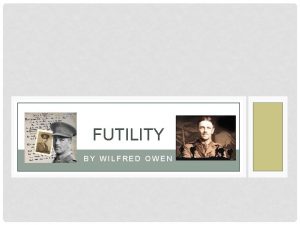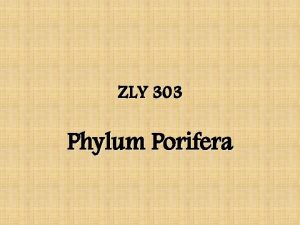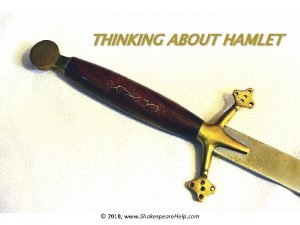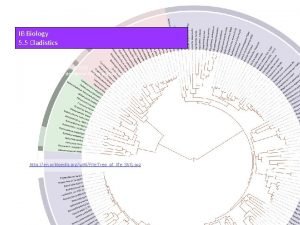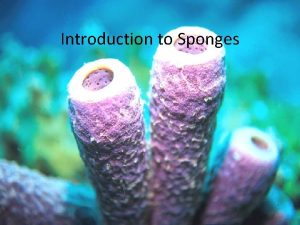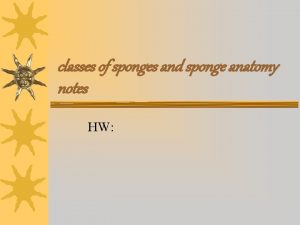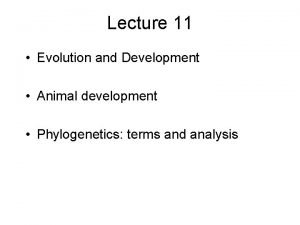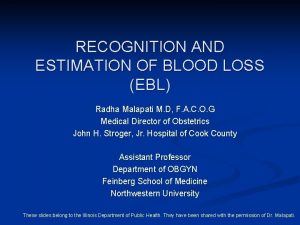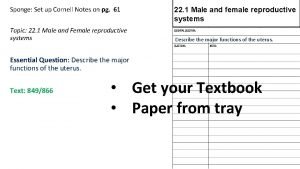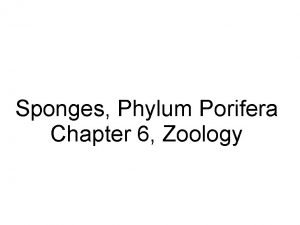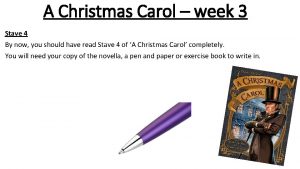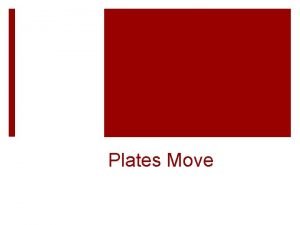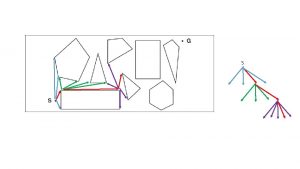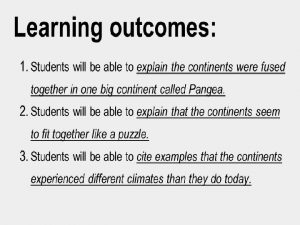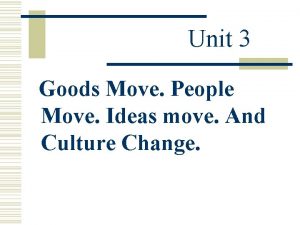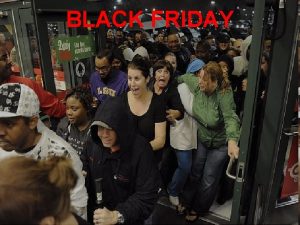Sponge Friday January 13 1 Move desks into
































- Slides: 32

Sponge: Friday, January 13 1. Move desks into rows 2. List two ways in which geography or location led to differences in the English colonies? 3. What country initially settled New York and what was it called? 4. What colony was formed by colonists who left Massachusetts because of religious disagreements with the Puritan church? 5. Brain Pop videos

Standard 1 Review Chesapeake Bay Massachusetts Bay Mid-Atlantic Colonies Jamestown, Virginia New England New Netherlands, Colonies Pennsylvania Powhatan Bacon’s Rebellion House of Burgesses Virginia Company Tobacco John Smith John Rolfe Indentured Servant Head right system Puritans Pilgrims King Phillip’s War Town Meetings Half-Way Covenant Salem Witch Trials John Winthrop Rhode Island New Amsterdam English takeover William Penn Quakers

Economy and Society develops in British North America Standard 2

Standard SSUSH 2 �SSUSH 2: Trace the ways that the economy and society of British North America developed. �(a) Explain the development of mercantilism and the trans-Atlantic trade.

Economy of Colonial America �Mercantilism – An economic system or theory in which a country seeks to gain self-sufficiency with a quest to obtain wealth (mostly through gold and silver). �In this system, a mother country used its colonies to make a profit by extracting natural resources and by selling its products in the colonies.

Economy of Colonial America �“We want silver and gold!” -- the strong feeling from European countries in the 17 th century; very competitive �Mercantilism requires a favorable balance of trade �Where a country sells more than they buy. �This would increase the money supply

Economy of Colonial America �A profitable trans-Atlantic trade developed between England the colonies: �The colonies sold their raw materials and finished goods to England, and the colonies would purchase finished goods from England �The Navigation Acts required that some colonial goods could only be sold to England

Standard SSUSH 2 �SSUSH 2: Trace the ways that the economy and society of British North America developed. �(b) Describe the Middle Passage, growth of the African population, and African. American culture.

The Rise of Slavery �Early beginnings in the 15 th Century when Portugal began shipping slaves from Africa to the Americas �Toward the end of the 17 th century, the number of people coming to North America as indentured servants fell and the price of an indentured servant rose �Therefore, the colonies (esp. in the South) begin to rely on African slaves �As they were slaves for life, the return on an investment of a slave was higher than for an indentured servant

Slavery: Triangular Trade �The Triangular Trade was a three-way trading network: 1. Rum and other goods from New England were shipped to Africa; other colonial goods and raw materials were sent to England 2. In Africa, they traded enslaved people in exchange for goods from the Colonies and England 3. Slaves were taken to the West Indies and sold for sugar and molasses,

Slavery: The Middle Passage �The middle passage was the slaves’ journey from Africa to the Americas in the triangle trade


Slavery: The Middle Passage �The Middle Passage was brutal �Journey took up to 6 months �Many died on the journey from starvation, disease and suicide (up to 20%+ died on each ship) �The use of slave labor increased in the Americas once people saw how profitable the system could be �Blacks accounted for half of Virginia’s population by 1750


Homework: Due Tuesday Jan. 17 �Complete the labeling activity on the back of the colonial comparison chart. For each statement, you should decide whether it refers to the Southern colonies (S), Middle colonies (M) or New England colonies (NE). Put the correct abbreviation in the blank next to each statement.

Sponge: Tuesday, January 17 1. Look in your notes for the definitions of the following words: �Mercantilism �Middle Passage �Trans-Atlantic Trade 2. What is the “theme” for each of the colonial regions? (Southern, Middle and New England) 3. Get out your homework for me to check—your colonial comparison

�SSUSH 2 The student will trace the ways that the economy and society of British North America developed. �b. Describe the Middle Passage, growth of the African population, and African-American culture.

Slaves’ Culture �Blacks accounted for half of Virginia’s population by 1750 �Although families were torn apart by slavery, slaves coped by forming new families and holding on to their cultural heritage Examples: �Weaving baskets and molding pottery

The Movies aren’t always real • We assume that the African slaves who came to America came from the same culture. • NOT TRUE!! • They came from many different cultures and backgrounds within Africa and were thrown together. • They often spoke different languages, had different religious beliefs, and different traditions.

Slavery in the South v. South Carolina and Georgia: brutal conditions; diseases; majority of the population; little contact with whites helped them to preserve culture; strong kinship; skills brought from Africa


Rebellions v. Stono Rebellion, SC: 100 slaves killed 20 whites before being caught and executed v. Almost fifty revolts between 1740 and 1800 v. Passive resistance v. Many run-aways

SSUSH 2 The student will trace the ways that the economy and society of British North America developed. d. Explain the significance of the Great Awakening.

Religious Expression �By early 1700 s, the Puritan Church had declined in power and popularity; church membership decreased �Massachusetts government created the Charter of 1691 that required freedom of worship and banned the practice of permitting only Puritan church members the right to vote

Religious Expression-Great Awakening �The First Great Awakening- Occurred in 1730 s- 40 s. �Characteristics: Traveling ministers told people to admit their sins and work toward a personal relationship with God �Ministers rode the circuit to many colonies �Jonathan Edwards, “Sinners in the Hands of an Angry God” �George Whitfield �People were encouraged to think for themselves on religious matters �Many Americans (slaves, colonists, and

“Your wickedness makes you as … heavy as lead, and to tend downwards with great weight and pressure towards hell; and if God should let you go, you would immediately sink and swiftly descend and plunge into the bottomless gulf. . . and all your righteousness, would have no more influence to uphold you and keep you out of hell, than a spider's Jonathan Edwards: “Sinners in the Hands of

Religious Expression-Great Awakening �The First Great Awakening-Significance: �De-emphasized the role of church authority and led people to question the allegiance to England �Helped establish the importance of freedom of religion and separation of church and state �Led to modern denominations (Baptists and Methodists) �Led to increased interest in higher education as several denominations started their own colleges to train new ministers: �Princeton �Brown �Dartmouth

SSUSH 2 The student will trace the ways that the economy and society of British North America developed. c. Identify Benjamin Franklin as a symbol of social mobility and individualism.

Social Mobility and Individualism �Social structures in England were well- defined, so social mobility was difficult �The lower classes had a hard time advancing, and those born with wealth and power (aristocracy) had little fear of losing their position in society �HOWEVER, land was plentiful in North America and even those who arrived with little could work hard to advance themselves �Individualism is the belief in the ability of each individual to achieve success if they will apply themselves and work hard

Benjamin Franklin: Founding Father � 1706 -1790; born into a poor Boston family �Key Enlightenment figure �Scientist, philosopher, and inventor �Printer, writer and businessman �Ambassador �Only non-President to appear on our currency �Exemplified individualism by striving to improve himself and social mobility

Standard 2 Review Slaves’ culture Middle Passage Triangular Trade Differences between North and South Enlightenment Great Awakening Benjamin Franklin Jonathan Edwards Slaves’ living conditions

Unit 1 test is tomorrow on Standards 1 and 2!!! �What can you do to study for this test? �Read your notes, colonial comparison chart & review sheet from today �Read the EOCT packet that I gave you and complete the questions �Complete the standard breakdown sheet �What kind of test will this be? 1. Review colonial comparison chart front + back
 Spongebob's aunt and uncle sponge wilma and sponge wilbur
Spongebob's aunt and uncle sponge wilma and sponge wilbur Sponge billy bob
Sponge billy bob Lateral thinking brain teasers
Lateral thinking brain teasers Futility wilfred owen meaning
Futility wilfred owen meaning 1. the space between traffic clusters is called a(n)
1. the space between traffic clusters is called a(n) Function of porocytes
Function of porocytes Hollow blastula of sycon
Hollow blastula of sycon Hamlet sponge quote
Hamlet sponge quote Sponge riddle
Sponge riddle Cladogram ib biology
Cladogram ib biology Do sponges have a backbone
Do sponges have a backbone Syconoid sponge example
Syconoid sponge example Calcareous sponges
Calcareous sponges Duties of a scrub nurse
Duties of a scrub nurse Glass rope sponge scientific name
Glass rope sponge scientific name Porifera importance
Porifera importance Classes of porifera
Classes of porifera Sponge types
Sponge types How does a sponge defend itself
How does a sponge defend itself Lap sponge ebl
Lap sponge ebl Characteristics porifera
Characteristics porifera Pg
Pg Body structure of porifera
Body structure of porifera What is hamlet's point in comparing rosencrantz to a sponge
What is hamlet's point in comparing rosencrantz to a sponge Archaecytes
Archaecytes Sea sponge phylum
Sea sponge phylum Sponge choanocytes
Sponge choanocytes Sponge gastrovascular cavity
Sponge gastrovascular cavity Sponge method critical thinking
Sponge method critical thinking I may sponge away the writing on this stone
I may sponge away the writing on this stone Symmetry porifera
Symmetry porifera Menstrual sponge cvs
Menstrual sponge cvs Introduction to invertebrates
Introduction to invertebrates



